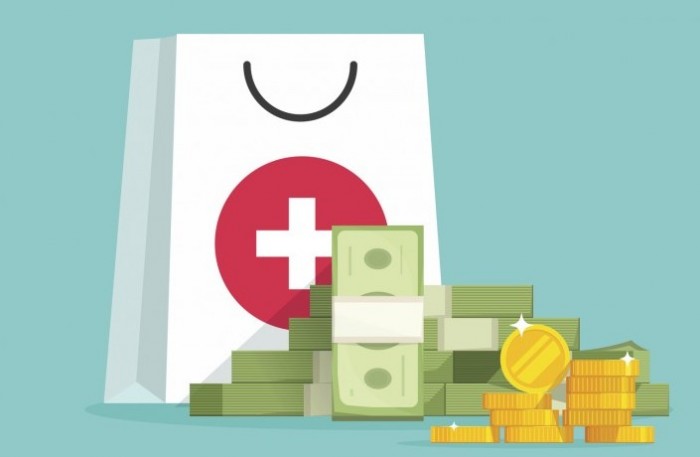Consumer-Directed Health Plan Members Spent 13% Less on Care in 2016
Individuals enrolled in consumer-directed health plans spent less on care than non-members.

Source: Thinkstock
- Individuals enrolled in consumer-directed health plans (CDHPs) in 2016 had 13 percent lower spending on average than those not enrolled in CDHPs, according to a report from Health Care Cost Institute (HCCI).
CDHP members also consistently spent less than non-members across several service categories, such as inpatient facilities and prescription drugs.
The researchers noted that since 2010, high-deductible health plans (HDHPs) have increased in popularity among those covered by employer-sponsored insurance. HDHPs, which include CDHPs, offer lower premiums in exchange for more exposure to out-of-pocket payments. While these plans have been shown to reduce overall spending, little is known about the impact these plans have on service use.
Researchers set out to understand differences in spending and use across types of health plans. The Institute analyzed a sample of over ten million individuals under the age of 65 who are enrolled in a full year of employer-sponsored insurance coverage between 2014 and 2016. Of these individuals, 26 percent were enrolled in a CDHP.
The team found that CDHP plan enrollees had lower per-person spending in each year than non-CDHP enrollees. In 2016, per-person spending for CDHP enrollees was $4562, while per-person spending for non-CDHP enrollees was $5216, a difference of 13 percent. This difference in spending occurred in past years as well: per-person spending for CDHP members was 11 percent lower in 2014, and 12 percent lower in 2015.
READ MORE: What Are the Pros and Cons of Consumer Driven Health Plans?
Between 2014 and 2016, per-person spending grew for both populations, increasing by seven percent for CDHP enrollees and nine percent for non-members.
The team then examined CDHP members’ and non-members’ total spending and use of services across four categories, including inpatient facilities, outpatient facilities, professional services, and prescription drugs.
The results showed that per-person spending was lower for CDHP enrollees across all service categories. In 2016, CDHP members spent 13 percent less on inpatient facilities than non-members, and seven percent less on outpatient facilities. Additionally, CDHP members spent eight percent less on professional services, and 26 percent less on prescription drugs.
Between 2014 and 2016, both populations saw spending grow across all service categories, although increases in spending were slightly higher for non-CDHP members. For non-CDHP members, prescription drugs had an average annual growth of seven percent, and six percent for CDHP enrollees. Professional services increased by three percent for non-CDHP members, and by two percent for individuals enrolled in CDHPs.
The lower spending among CDHP members primarily reflected lower use across service categories, the researchers said. For example, people enrolled in CDHPs used 12 percent fewer outpatient services in 2016 than non-members and had seven percent lower spending. People in CDHPs also used 17 percent fewer prescriptions and had 26 percent lower gross spending on prescriptions.
READ MORE: Consumer Demand for High-Deductible Health Plans Dwindles
The team pointed out that these results don’t necessarily mean that CDHPs result in lower care costs and utilization, and instead could be the effect of other factors.
“It is important to note that these findings are descriptive and do not prove that CDHP enrollment caused lower healthcare spending and use,” the team said. “Differences in spending and use could, for example, arise because those enrolled in CDHPs tend to be younger, healthier and may differ in other ways that affect their healthcare use.”
To determine whether lower spending and service use was limited to healthier CDHP members, HCCI also compared differences in per-person spending and service use between CDHP members and non-members diagnosed with type 2 diabetes, COPD, or hypertension.
The findings showed that CDHP members with one of these three chronic conditions had spending ranging from three percent to ten percent less than comparable non-CDHP members. CDHP enrollees with chronic conditions only had slightly lower spending across most medical categories.
CDHP enrollees with chronic conditions also had lower service use than comparable non-members. For example, CDHP members with hypertension had between four and six lower service use than non-CDHP members.
READ MORE: Consumer-Directed Care, High Deductibles Popular for Employees
The researchers noted that the study did have some limitations.
“Because we identify individuals with chronic diseases only if they have a medical claim with relevant diagnoses, it is possible that we under-identify individuals with chronic diseases,” HCCI stated.
“Another general limitation is that all prescription drug spending we observe is gross spending. It is possible that rebates and/or co-pay coupons reduce the total spending on prescription drugs or point-of-sale prices we observe. In that sense our gross spending numbers presented here may overstate true net prescription drug spending and, therefore, spending overall.”
Despite these limitations, the team is confident that their results add to previous findings, and provide a basis for future research on commercially insured individuals.
“Our findings are consistent with existing research, which does provide causal evidence that high-deductible plans induce lower spending and service use,” HCCI concluded.
“We consider our work a starting point for analysis and research on the commercially insured population rather than a complete analysis of this populations’ healthcare spending and service use.”
